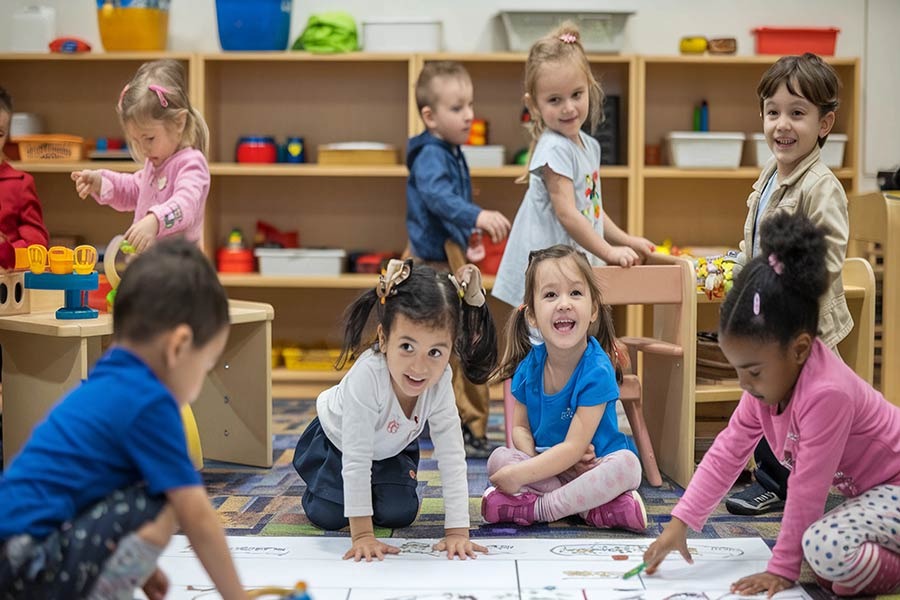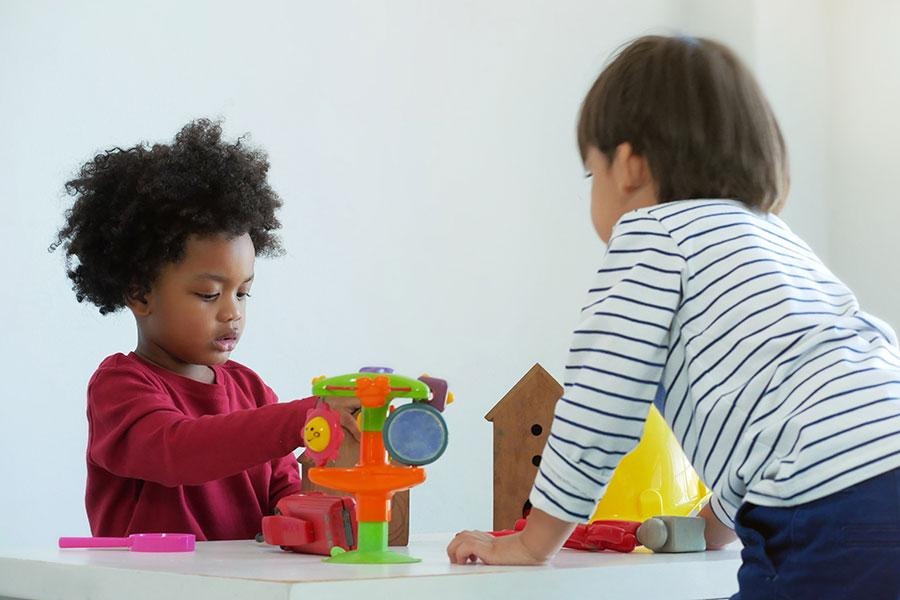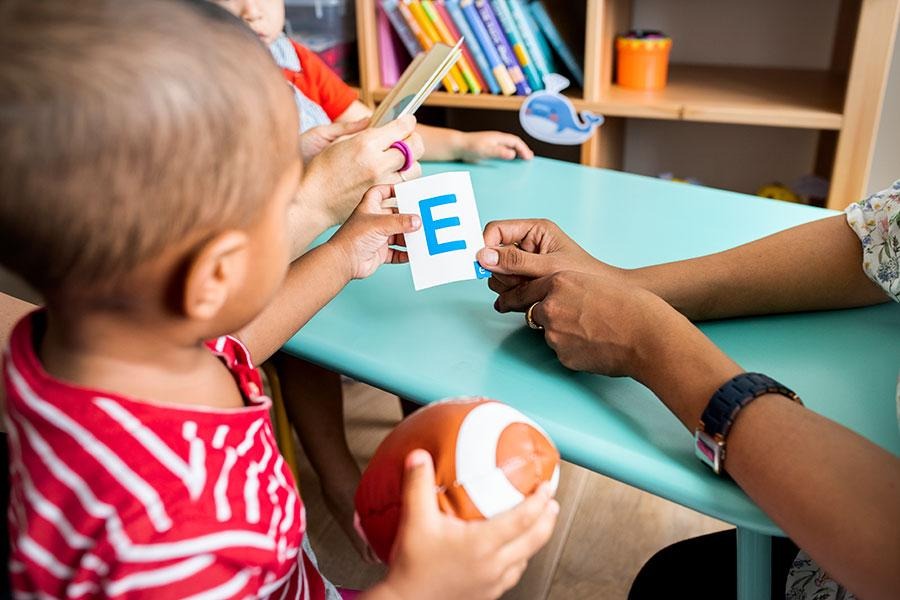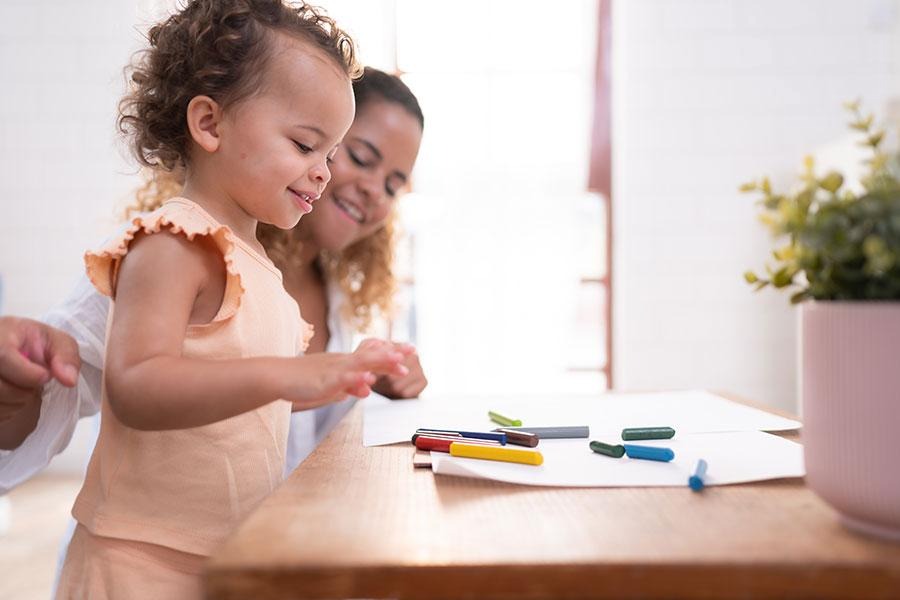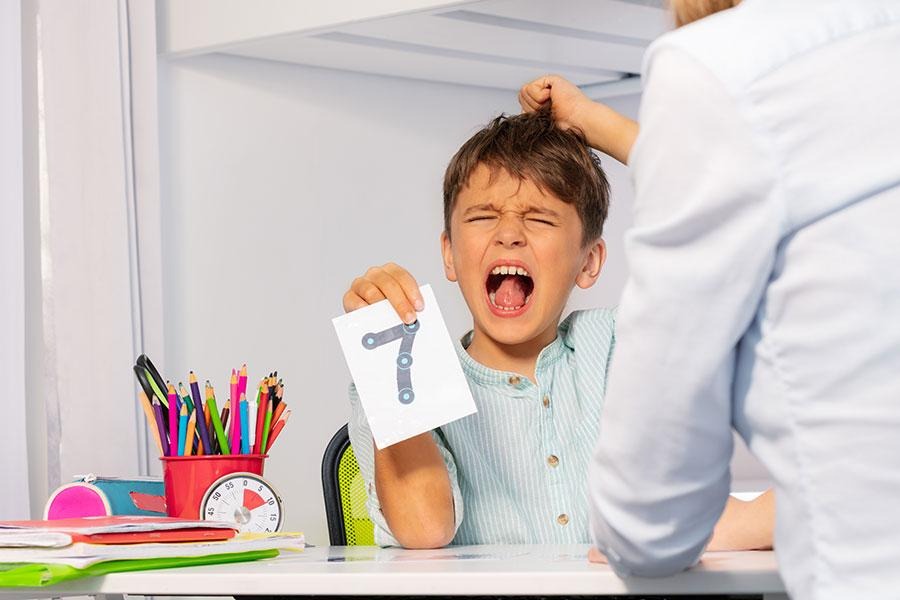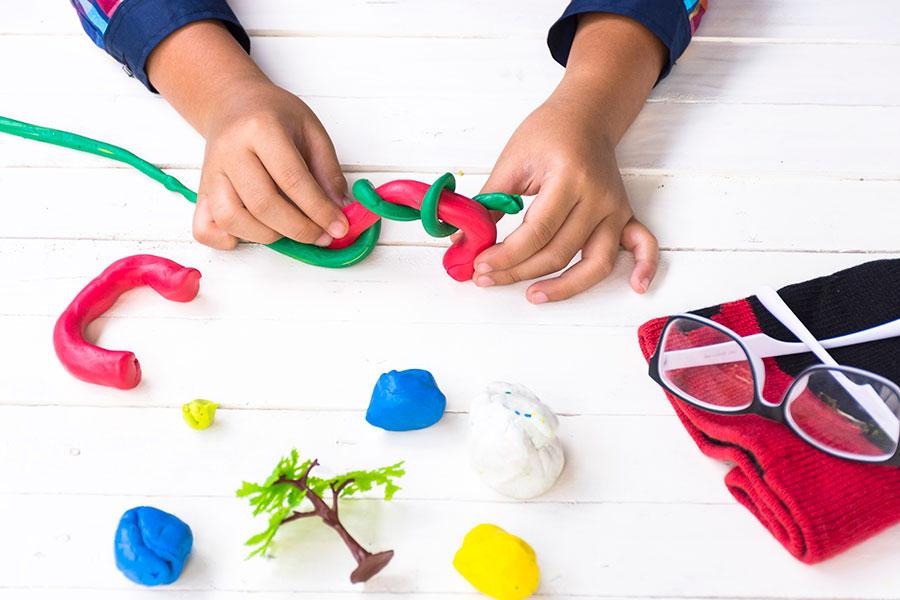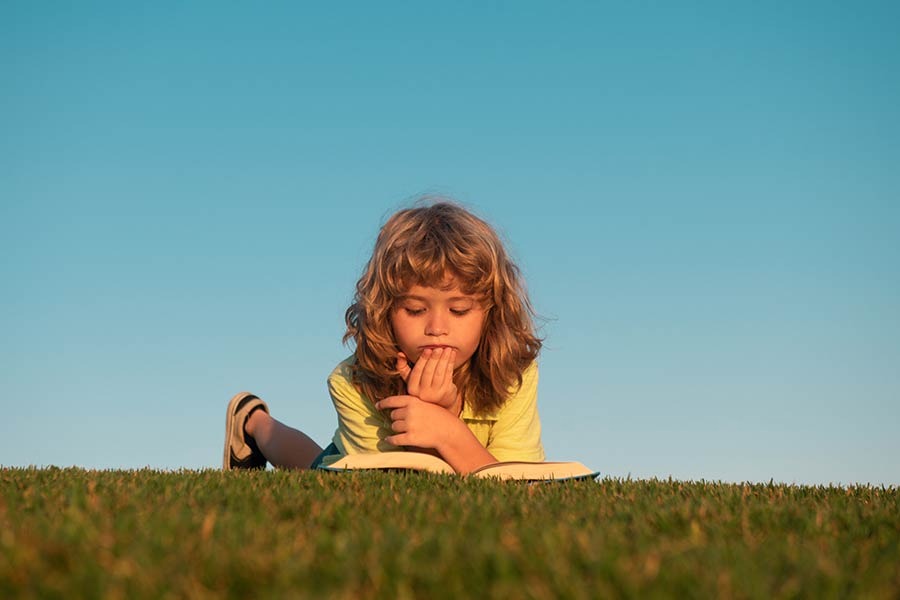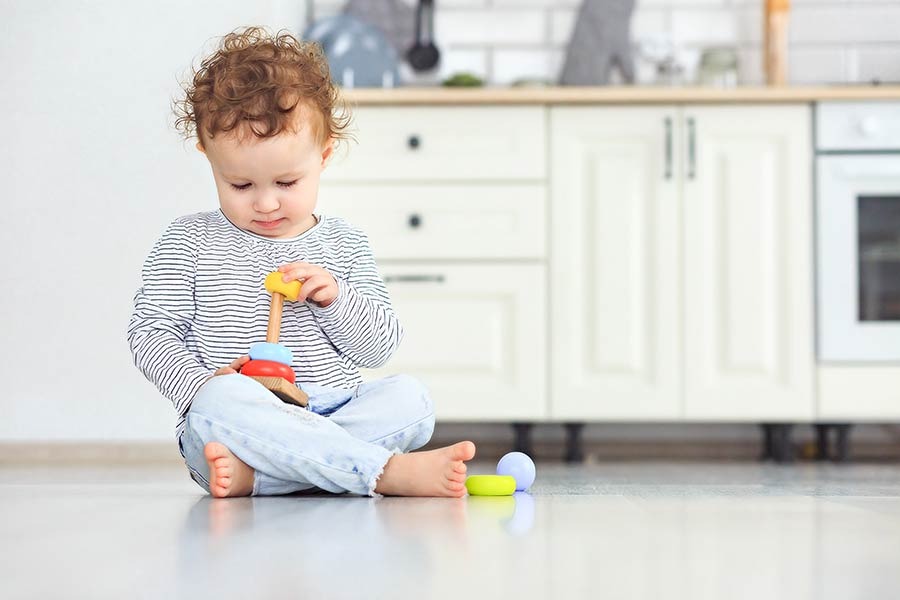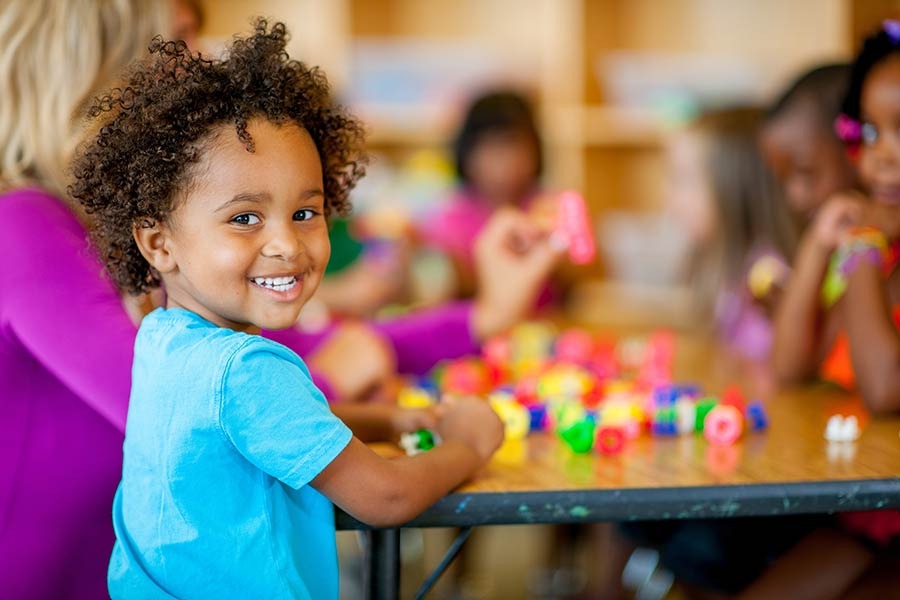The Reggio Emilia approach shines in early childhood education. It puts focus on curiosity, creativity, and being part of a community. We think this way of learning is special. It listens to what kids think and say.
This method makes learning a team effort. Kids are not just sitting and listening. They are part of their own learning journey. By following these ideas, we help make learning full of play and questions. This helps our kids grow in important ways when they are young.
Understanding the Reggio Emilia Philosophy
The Reggio Emilia philosophy helps us see how kids learn best. It started in Italy after World War II. Loris Malaguzzi and the people of Reggio Emilia wanted a new way to teach. They thought kids could teach us a lot.
This way of teaching was different. It said kids have rights and big ideas. It also said learning should be democratic.
Origins and History
Right after World War II, the community wanted to change education. They hoped for a school system that was democratic. Loris Malaguzzi led this charge. He focused on _relationships_, _communication_, and _collaboration_.
This history led to a special kind of school. It cared about what kids thought and liked.
Core Principles of the Approach
The core of the Reggio Emilia idea is simple. It sees children as smart, curious, and able to do a lot. Kids are active in their own learning.
- Relationships - How kids, parents, and teachers connect makes learning better.
- Environment - Classrooms are set up to encourage discovery. They are like another teacher.
- Documentation - Writing down what kids do and learn shows how they grow.
| Core Principles | Description |
|---|---|
| Image of the Child | Children are seen as strong, capable, and resilient individuals. |
| Community and Relationships | Strong collaboration among children, families, and educators. |
| Environment as Teacher | Spaces are intentionally organized to promote exploration and interaction. |
| Documentation | Reflecting on children's experiences through various forms of documentation. |
The Reggio Emilia philosophy changes how kids are taught. It helps kids explore their world in deep ways. Learning about its start and main ideas shows why it's important worldwide.
The Role of Curiosity in Learning
Curiosity is very important in how we learn. It is a big part of the Reggio Emilia way of teaching. By encouraging kids to ask questions and look into things they like, they learn more deeply.
This way of learning helps kids love to learn. It also teaches them to think well. These skills are important for success in life.
Fostering a Culture of Inquiry
Making a place that loves curiosity in education helps kids learn about many things. In this place, kids can talk openly and ask questions.
When we focus on inquiry-based learning, kids want to learn more. This makes them understand and remember things better.
Strategies to Encourage Curiosity in Children
Using different ways can help kids want to explore more in our classrooms. Here are some ideas:
- Give them things like art supplies and stuff from nature. This lets kids make and find out things on their own.
- Take them for walks outside. This helps them connect with nature and sparks their curiosity.
- Use real-life experiences, like field trips, to make what they learn in class seem real.
By doing these things, we make learning full of curiosity, asking, and finding out. This makes learning fun for every kid.
Creativity as a Cornerstone of Education
Creativity is key in our education, especially with the Reggio Emilia approach. We mix art forms to make a place where kids love to learn creatively. Activities like painting and acting help kids show their feelings. They also teach them to think deeper, solve problems, and understand emotions better.
Artistic Expression and Its Importance
Art helps kids see the world in new ways. By being creative, they learn to solve problems creatively. We use art so kids can share their thoughts and feelings. Every art project shows what they know and feel.
Innovative Learning Environments
We think making creative places helps kids learn best. Our classrooms have open spaces for working together, stuff to explore, and areas just for art. These special places make learning exciting. They help creativity and learning come together. When kids help make their class look great, they get more into learning. This makes learning better for everyone.
| Key Elements | Impact on Learning |
|---|---|
| Artistic Activities | Enhances critical thinking and emotional expression |
| Open Spaces | Encourages collaboration and social interaction |
| Flexible Materials | Promotes hands-on exploration and innovation |
| Dedicated Artistic Zones | Supports focused creative endeavors |
Reggio Emilia-Inspired Practices in the Classroom
We make our classroom a lively place where kids can learn together and through projects. The Reggio method focuses on what our students like. This lights up their want to learn and be creative. We'll look at two main things: learning through projects and working together to learn better.
Project-Based Learning Experiences
Learning through projects is key in Reggio teaching. It lets kids dive deep into a topic. They do this through hands-on activities and asking questions. These projects help kids think better and solve problems. They work with their friends and what's around them.
- Inquiry-Driven Themes: We pick themes that excite the kids. This way, they really get into what they're learning.
- Real-World Connections: Projects connect to real life. It shows kids how what they learn fits into the world.
- Artistic Expression: Using art lets kids show what they've learned in different ways. It boosts their creativity.
Collaboration Among Students and Educators
Working together is big in our classrooms. It lets kids and teachers aim for the same goals. This way of learning helps kids talk better and feel they belong. It builds up their team skills.
- Peer Interaction: Kids learn to share ideas and listen to what others think as they do projects together.
- Educator Guidance: Teachers help by talking things through and giving support. They help kids overcome problems and find answers.
- Community-Building: A team-like classroom creates friendships and support. This is good for kids' social growth.
These Reggio ideas change our classrooms into places where learning never stops. With projects and team learning, kids grow to face challenges, work well with others, and really love learning.
Community Engagement in Reggio Emilia
In the Reggio Emilia way, community engagement is key to helping kids learn. It shows how important family involvement is for a kid's success in school. When families join in school activities, their children do better. They feel like they belong and want to do well. This teamwork makes a place where learning goes beyond just school.
The Importance of Family Involvement
Having families involved in schooling is crucial. It makes a supportive place for learning. When families and teachers work together, they help make decisions. This teamwork betters the learning of the children and makes strong bonds. It also means better talks and shared goals. As families share their ideas, schools become a place for everyone.
Making friends with local places makes learning better. Schools work with local artists and businesses to give real-life learning chances. These chances help students understand their culture more and see new things. Community events and workshops let students show their work. They also let people from the town share what they know and help everyone grow together.
| Aspect | Family Involvement | Local Partnerships |
|---|---|---|
| Engagement Type | Active participation in school events | Collaborative projects and workshops |
| Benefits | Improved student motivation and belonging | Enhanced educational experiences and resources |
| Impact on Students | Increased learning outcomes and confidence | Cultural awareness and community connection |
| Long-Term Effects | Stronger family-school relationships | Ongoing community support and collaboration |
We believe in the power of working together with our community. This teamwork helps children do well in school and builds a strong community. We work to keep these relationships strong. This makes a school that likes to work together and succeed together.
The Impact of Environment on Learning
The place where we learn matters a lot. It helps shape how kids feel and grow in school. A well-set-up classroom makes learning fun. It helps kids explore and come up with new ideas.
The Classroom as a Third Teacher
A classroom is more than just a place for lessons. It's a key part of helping kids learn better. The setup around them sparks their interest and creativity. Things like light, colors, and how desks are arranged make a big difference. They help kids focus and feel happy. A smart classroom setup encourages kids to learn together and on their own.
Creating Inspiring Learning Spaces
We need to make learning spaces that get kids excited to explore. We can use:
- Open spaces for working together
- Hands-on materials
- Changeable furniture for different activities
- Plants and nature-themed decorations
These parts are key to making a learning space that's fun and helpful. They let kids be curious and creative. This helps kids do their best in a place that listens to them.
| Classroom Design Element | Impact on Learning |
|---|---|
| Natural Lighting | Makes moods better and helps kids concentrate, cutting down tiredness. |
| Open Spaces | Brings more movement, teamwork, and making friends. |
| Flexible Seating | Lets kids choose where they're comfiest. This helps them learn better in their own way. |
| Interactive Learning Materials | Makes learning more engaging and hands-on. |
| Connection with Nature | Makes kids feel calm and more connected to the world around them. |
Investing in a great classroom design supports the Reggio Emilia approach. Plus, it builds a learning space where kids love to learn and keep learning for life.
Assessment and Documentation in Reggio Emilia
The Reggio Emilia way is different from usual school checks. It looks closely at kids interacting. Child development observation is key. It helps know each kid's progress and discoveries. By watching carefully, teachers spot moments that show a child's special path.
Understanding Child Development Through Observation
We watch kids closely to see how they grow. This tells us about their thinking, feelings, and how they get along with others. Documentation in learning means we write down what we notice. It shows how far they’ve come. It also makes the bond between teachers and kids stronger.
The Role of Portfolios in Learning
Portfolios are a way to see how much a child has learned. They have drawings, thoughts, and projects. They tell a full story of a child's growth. These portfolios are not just for marking progress. They also bring families into the school world, showing off what their kids have done.
Success Stories from Reggio Emilia-Inspired Programs
Many success stories show the good impact of Reggio Emilia-inspired programs. Educators and families say this approach helped kids a lot. It focuses on being curious, creative, and working together.
Case Studies and Testimonials
We found many inspiring stories about the Reggio Emilia way helping in schools. For example, a school in California saw more teamwork and creative ideas. Teachers noticed that students who were shy started to take part more.
"The Reggio Emilia approach transformed how my child interacts with both learning and peers. It's a game-changer!"
In New York, a preschool used hands-on activities to help kids express themselves. Kids got better at learning and were more excited about it.
Transformative Learning Experiences
We think it's important to have programs that change early learning for the better. In Massachusetts, kids worked together on understanding the environment. They learned a lot about the world around them.
| Program Name | Location | Key Outcomes |
|---|---|---|
| Creative Explorers | California | Increased collaboration and creativity among students |
| Artistic Minds | New York | Enhanced artistic expression and engagement in learning |
| Eco Warriors | Massachusetts | Deepened problem-solving skills and environmental awareness |
These stories show how Reggio Emilia can really change education. They prove this approach can help learners a lot. It makes a big difference in education for young kids.
Conclusion
We found the Reggio Emilia way very special. It loves curiosity, creativity, and being together. This method helps kids love learning by exploring what they're curious about. They also get to use their imagination a lot.
Looking ahead, it's key to mix these ideas into learning everywhere. By using the Reggio Emilia way, schools focus on what's real and important to kids. They learn better together. It's a big chance for teachers to make learning fun and full of wonder.
Thinking about how we teach can lead us to try new things. If we use Reggio Emilia's ideas, we help kids be curious, creative, and good at working together. We all can help make learning better. Let's celebrate every kid's own story and what they can do.
FAQ
What is the Reggio Emilia approach?
The Reggio Emilia way is about letting kids lead in learning. They get to play, think, and work with others. This happens in Italy. It helps kids get really into learning by doing fun things together.
How does the Reggio Emilia philosophy support children's development?
This approach thinks kids' ideas are important. It helps them think well and make friends. Kids get to dive into what they like and share their creative side.
What role does the environment play in the Reggio Emilia approach?
In Reggio Emilia, the classroom is super important. It's like a teacher too. The place where kids learn is made to spark joy and curiosity. Kids get to learn in a beautiful space with lots of light and fun things to play with.
How is assessment conducted in a Reggio Emilia-inspired classroom?
Instead of tests, Reggio Emilia classrooms watch and learn from what kids do. Teachers keep track of kids' work and growth in special books. This helps understand each kid better.
What is the significance of family involvement in Reggio Emilia programs?
Families play a big part in the Reggio Emilia way. They join in activities and help make decisions. This makes the learning community stronger and helps kids grow better.
Can you provide examples of project-based learning in the Reggio Emilia approach?
Kids take on cool projects based on what they're curious about. They might study nature, make art, or work with local artists. It's all about working together and being creative.
What are the core principles of the Reggio Emilia approach?
Its main ideas include seeing kids as smart, caring about friendships, and thinking the classroom setup is key. It's all for a kind and smart way of learning together.
How does the Reggio Emilia philosophy foster curiosity in children?
Reggio Emilia gets kids to love asking questions. They get to play with cool stuff and do activities that make them want to learn more. It's all about diving deep into learning.
What evidence exists of the effectiveness of Reggio Emilia-inspired programs?
Lots of stories show how great Reggio Emilia is. Kids are more into learning and do really well. Teachers and families see how much it helps with education.
